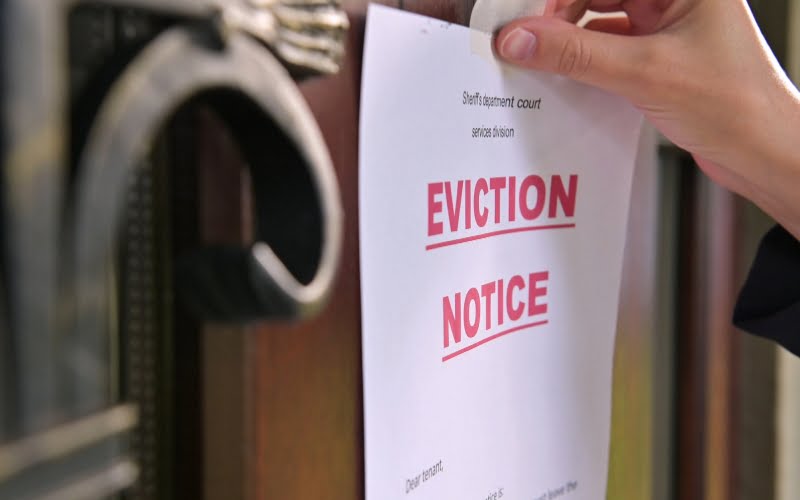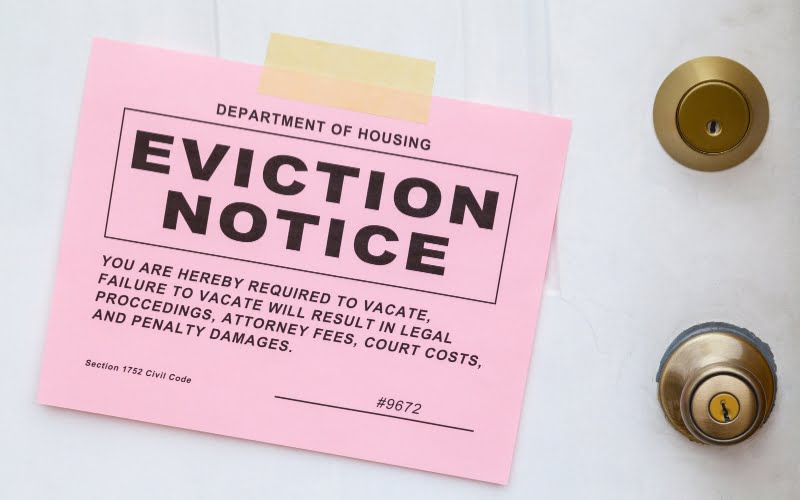Last Updated on March 18, 2024 by Kelvin Nielsen
Are you looking to evict a tenant in California with no lease? If so, this blog has you covered! We’ll walk you through the step-by-step eviction process you must take to be successful in removing the tenant from your property.
CA Civil Code 1940-1954.06 grants landlords certain rights. Among these is the right to evict a tenant who has no lease. Aside from that, you may also be able to evict a tenant for other legitimate reasons, such as nonpayment of rent, lease violations, or where you don’t want to renew a month-to-month lease.
To evict the tenant from your California property, you must obtain a court order. You cannot try to remove the tenant in any other way, such as throwing out their personal belongings, locking them out, or shutting down utilities.
These are all forms of ‘self-help’ eviction tactics and are illegal in California as they are elsewhere in the country.
In this blog, we’ll walk you through the step-by-step process you must follow when evicting a tenant in California with no lease.
How to Evict a Tenant in California With No Lease
Step #1: Serve the tenant with an appropriate eviction notice.
In California, to evict a tenant without a lease, you must serve them a 30-Day Notice to Vacate.
If the tenancy is less than a year old, you must serve the tenant a 30 calendar days’ notice to vacate. But where the tenancy is 1 year or more, you must serve the tenant with a 60 calendar days’ notice to vacate.
If the tenant doesn’t move out after the expiry of the notice period, you can continue with their eviction by filing an eviction lawsuit in a Superior Court.
Step #2: File an eviction lawsuit with the Superior Court of the applicable county in California.
If the notice period ends and the tenant is still on the property, you can continue with their eviction by filing an eviction lawsuit against them. In court, you’ll need to file an Unlawful Detainer lawsuit.
Filing an Unlawful Detainer lawsuit in California will set you back by between $240 and $435 in fees.
Step #3: Have the tenant served with a copy of the Summons and Complaint.
Unlike an eviction notice, a Summons and Complaint must be served by a process server or the sheriff. You have up to 60 days to have the tenant served after filing the eviction complaint.
Once this is done, the tenant will then have a chance to respond to the allegations. The tenant will have five-ten business days to file the answer. In their defense, the tenant may try to fight their eviction by providing any of the following defenses.
- Their eviction was due to their race, color, religion, nationality, or any other protected class.
- Their eviction was a retaliatory action for exercising a legal right. When it comes to repairs, for instance, California renters have a right to withhold rent. It’d then be retaliatory to try to evict the tenant on grounds of non-payment of rent.
- The eviction process was illegal.
- The eviction process had substantial errors.
If the tenant fails to respond, you can ask the court for a default judgment without having to attend the hearing. However, if the tenant did respond, then you’ll need to file a hearing request.
Step #4: Attend the court hearing.
Typically, eviction hearings in California are held within 20 days of filing a hearing request. It goes without saying that you should adequately prepare for the hearing by carrying all relevant evidence.
Including, a copy of the lease, eviction notice, summons and complaint, and even witnesses (if any).
If the outcome of the hearing is in your favor, you’ll need to obtain a Writ of Execution.
Step #5: Removal of the tenant.
A Writ of Execution is the tenant’s final notice to leave the property. In California, a Writ of Execution gives a tenant up to 5 days to leave. After which, the sheriff will have to forcibly eject them and return possession back to the landlord.
The tenant may also be able to delay their eviction by filing a stay of execution.
Frequently Asked Questions (FAQs): How to Evict a Tenant in California With No Lease.
Q: How must a landlord in California serve an eviction notice to a tenant?
A: Please note that you must serve the eviction notice in a manner prescribed by state law. The following are the options you have.
- Hand a copy to the tenant in person.
- Hand a copy to a person of a suitable age AND mail another copy to the tenant via certified or registered mail.
- Post a notice on the entry door, or any other conspicuous area at the premises.
Make sure to keep the original copy, as well as a declaration of service should you require to adduce evidence in court.
Q: What rights do tenants without a lease have in California?
A: Even with no lease, California tenants do enjoy certain rights. The following are some examples.
- The tenant has a right to proper notification before lease termination.
- The tenant has a right to enjoy their rented premises in peace and quiet. You must, for instance, respect their privacy by providing them a 24 hours’ advance notice prior to entry.
- The tenant has a right to live in a property that abides by the basic health, safety, and building codes. You must also respond to their repair requests within a 30 day period.
- The tenant has a right to fair and equal treatment as per the federal and state fair housing laws.
- The right to a proper eviction process. As a landlord, you must use proper legal means to remove the tenant from the property.
Q: What is a legally valid reason to evict a tenant in California?
A: Yes, landlords must have valid legal reasons to evict a tenant in California. You cannot just wake up one day and decide to kick out the tenant from your property for no reason.
Valid reasons to evict a tenant include nonpayment of rent, lease violations, illegal activities, and where you no longer want to renew a month-to-month lease.
Q: How much time does a landlord have to give a tenant to move out in California?
A: The amount of time to give a tenant to move out in California will depend on the reason for the eviction. If evicting a tenant for non-payment of rent, for instance, you must give the tenant a notice of at least 3 calendar days.
This will allow the tenant 3 days to either pay the rent balance or move out of the property.
Q: How do you legally remove a renter in CA if there is no contract?
A: You must follow the exact process in this blog to successfully evict the tenant. You must serve the tenant a 30 days’ advance notice. Then, you may choose to move to court to file an eviction lawsuit (if the matter remains unresolved). You must then obtain a copy of the Summons and Complaint and have the tenant served.
Lastly, you must attend the hearing for the judgment. If the judgment is in your favor, the tenant will have to move out within 5 days, failure to which the sheriff will have to forcibly remove them.
Q: Is a verbal agreement legally binding in California?
A: Under California law, a lease between a landlord and a tenant can be established in either of three ways. That is, if there is a written or oral agreement, or if payment is accepted as rent.
So, yes, a verbal agreement is legally binding.
Q: Can a landlord terminate a month-to-month lease without cause in California?
A: Here is a comprehensive guide on the topic.
Conclusion
There you have it – a step by step process on how to evict a tenant in California with no lease. Trying other eviction methods such as retaliatory- or discriminatory evictions, as well as ‘self-help’ eviction methods, will all be futile.
Disclosure: The content herein isn’t a substitute for advice from a professional attorney. It’s only meant to serve educational purposes. If you have a specific question, kindly seek expert attorney services.
Sources: CA Civil Code 1940-1954.06, illegal eviction procedures in California, serving eviction notices in California, removal of a tenant in California,

Hi, I’m Kelvin Nielsen, an experienced landlord and accomplished real estate lawyer. My focus is on answering your questions about renting in the hopes of making your life as a renter or a landlord a bit easier.







